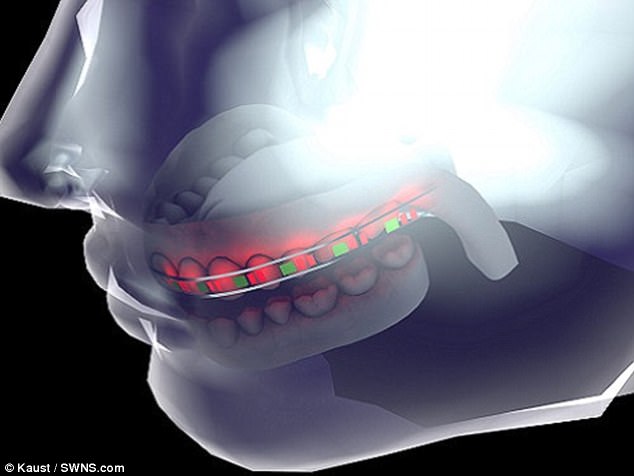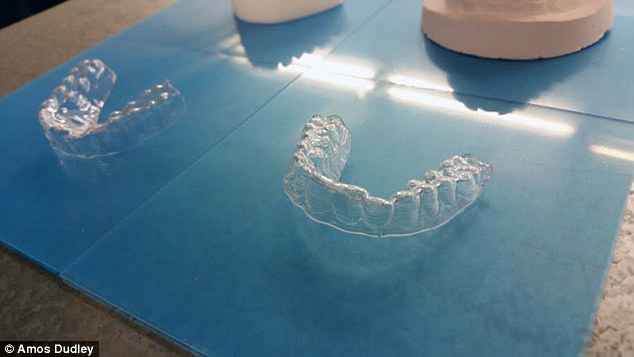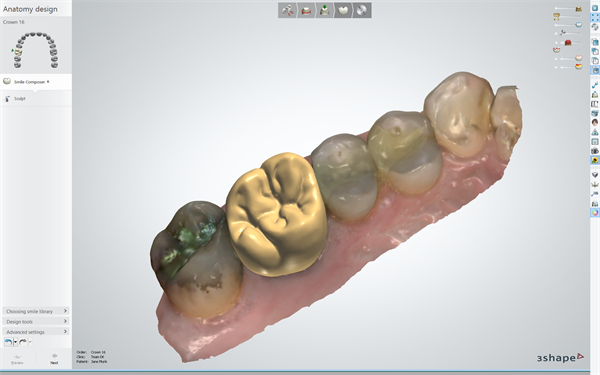There is obviously a growing use of 3D printing in the medical industry. Indeed, it can be used to create tools, prostheses, dental implants, and so on. Soon, professionals will even use the technology for bioprinting, in order to 3D print tissue-like structures. But in this blog post, we are going to focus on the evolution of 3D printing in the dental sector. Indeed, the impact of 3D printing in the dental industry is quite important and this sector is actually making the most of the additive manufacturing technology. At EnvisionTEC, a 3D printer manufacturer, the sales of 3D printers for dentistry increased by 75% from 2015 to 2016. This is proof that it is evolving quickly and that the use of this printing technology is relevant for this sector.
It’s now possible for professionals of the dental sector to do some oral scanning and CAD design by themselves. Then, they can 3D print with their own desktop 3D printer or with an online 3D printing service. Dental businesses are progressing, and new technologies such as 3D printers and 3D scanners dedicated to dental work are developed.
Dental laboratories are more and more using it to develop new working methods, and to create many devices like 3D printed braces for a faster teeth alignment, orthodontic appliance or 3D printed implants and dental crowns.
3D printing and mass customization: a revolution in the dental industry
Additive manufacturing is the perfect solution to get customized items, for all sectors. But it becomes even more relevant when it comes to the medical sector, as it allows great realizations such as prosthesis.
In the healthcare field, some solutions have to be adapted to the patients. Typically, prosthesis or implants have to match with the patient’s morphology. And it is also particularly true for dentistry because everybody has his own dentition, all patients’ mouths are different. It is now possible to get an accurate 3D model of the patient’s dentition, which will lead to 3D dental restoration, with solutions totally adapted to the patient.
Dental 3D printing is the key to modern dentistry, as it is really helpful for dental labs. Digital dentistry is wide-spreading quite fast in the industry for many reasons. As we said, it is an easy way to get customized items. Moreover, it is a cost-effective and time-saving method. For example, if your 3D printed device doesn’t fit, you just have to modify your 3D design. You don’t have to redo the whole process as you would have with injection molding!
Let’s see how this technology is changing the working methods of the dentistry sector.
How can 3D printing technology help dental professionals?
The benefits of 3D printing are numerous and this method can definitely help any medical professional to produce adapted medical devices. Here are a few examples of how 3D printing and more precisely the use of dental modeling software and dental 3D printers can help to improve the dentists, orthodontists, and prosthetists daily work:
3D printed braces with LED lights
Researchers from the King Abdullah University of Science & Technology in Saudi Arabia are developing “smart 3D printed braces”. The aim of these braces is to align and straighten the teeth faster, thanks to LED lights. These semi-translucent 3D printed braces put a battery on each tooth, in order to power the light because the energy actually helps the teeth to move faster. In case you’re wondering, no, the light can’t be seen by the naked eye, it is a discrete process. The team researchers worked on non-toxic lithium batteries, but also the flexible properties of these braces to make it safe and comfortable.
These 3D printed braces are not accessible for public use yet, but it gives a nice insight into the researches made in this sector.
3D printed aligners produced by a student
Aligners are a type of braces correcting teeth alignment. Amos Dudley, a college student of the Jersey Institute of Technology created his own aligners. Because he couldn’t afford the total cost of the traditional set of braces, he 3D printed his own braces. It is the same process as the well-known Invisalign invisible aligners, but this student did a DIY version. Amos Dudley’s orthodontic aligners only cost $60, and that is an important advantage as dental devices are ordinary extremely expensive. He built a set of braces by himself with models of his teeth and a Stratasys 3D printer. The 12 aligners are going to follow the progression and movement of its dentition. If it is not recommended to create a dental device by yourself, the project of this student is a success.
3D printed dentures
It is also possible to 3D print complete dentures, with gum and teeth, that have to be printed with biocompatible materials. Indeed, even the denture base is 3D printable and can be adapted to the patient’s morphology.
How to 3D print for dental applications?
3D scanning and 3D modeling for dental applications
It is becoming easy to 3D scan the dentition of a patient as dental 3D scanners are now available on the market. If you are working from a traditional CT scan, you obtained thanks to your scanning process, you’ll have to use two different software to work on 3D printing. Medical scans are usually a DICOM format, that is not supported by usual modeling software. You can use OsiriX a viewer that enables you to convert and post-process your file in 2D or 3D. This way, you can combine the use of two software to work efficiently on the computerized imaging, a.k.a CT scan (computed tomography scan).
A lot of 3D modeling software dedicated to the medical industry is available. If not for 3D printing, this 3D software can help you to get a good 3D visualization. The use of a 3D viewer is even more common to get a better visualization of a problem. 3D modeling software can help you to modify and adapt the 3D model to your needs. The possibilities of dental modeling are endless with these tools.
Desktop 3D printer or online 3D printing service?
Once your 3D model is ready, you have two different options to 3D print it.
Dental 3D printers are more and more used as they allow the dentist to work directly by himself, and then, to save time, allowing them to develop direct manufacturing.
If you don’t want to deal with all of this printing process, you can access the 3D printers of an online 3D printing service from dental labs. You’ll get affordable access to professional additive manufacturing. You can choose the technique, the materials, and the finishes that you need for your 3D printed dental work.
What 3D printing technique should you use?
It depends on the nature of your project and the use of the object you are planning to produce. Is it tools, dental appliances, crowns, bridges? Digital dentistry requires special 3D printing materials. Indeed when it comes to dental products, you have to use biocompatible material or biocompatible resins.
Source: Sculpteo by Lucie Gaget



